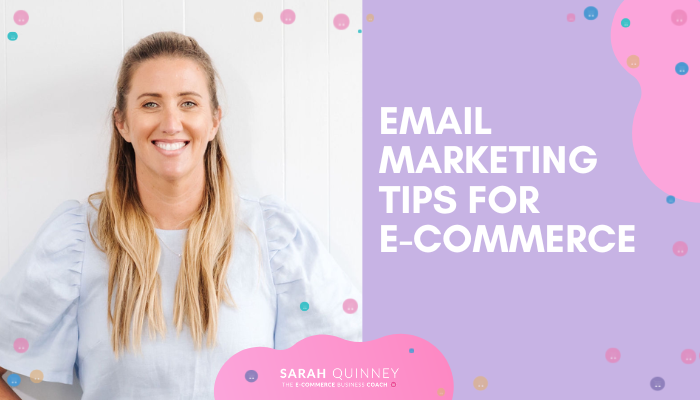
Email Marketing Tips for E-Commerce
E-commerce email marketing strategies can feel overwhelming. And as a business owner with so many things to worry about, it can quickly get put on the back burner. But, with about 3.8 billion email users in the world, it’s not a marketing tactic you should ignore!
By including a few important details in your emails and following these best practices you can create the best email marketing for e-commerce.
Why Do You Need Email Marketing for E-commerce?
With the rise of social media many businesses are spending less time focusing on their e-commerce email marketing strategy. While social media is very important to e-commerce, you shouldn’t turn your back on the results email marketing can generate. According to ConstantContact, 60% of consumers have made a purchase based on an email they have received, compared to 12.5% who buy strictly based on social media. This makes it clear that email marketing is still important.
Important elements in your e-commerce email marketing strategy
Subject lines
Subject lines are extremely important because they heavily affect open rates. An email open rate is a good metric of the reach your email campaign has. This is measured by the percentage of people who opened your email compared to the number of people who received it. The average open rate for e-commerce is around 17.1%. In order to get your emails to this target area, you will want to create a subject that draws attention and entices them to open the email fully. The subject line should be short to ensure it does not get cut off in your customers’ inboxes. Research shows about 41 characters or 7 words is usually a good measurement.
Additionally, the preheader text is very important and should always be used. Best practice would be to make sure this preview text supports the subject line. Because subject lines need to be so short, this text is great because it provides additional space to entice the customer to click on your email.
Call to action
One of the most important parts of your email marketing strategy is the call to action (CTA). When reading your email, it should be very clear to the customer what they should do next. This is where the CTA comes into play. CTAs should be large enough that if someone is just skimming the email they can see it standing out from the rest of the text. Additionally, CTAs should contain a verb to initiate action. Some common examples for e-commerce include “SHOP the sale,” or, “SEE our new products.”
Email marketing best practices
Creating the best email schedule
To create the best email marketing for e-commerce you will need to create an email schedule backed by research. Weekdays are better for sending out emails than weekends, but the best days to send out important emails are specifically Monday and Tuesday. Monday has the highest average open rate and Tuesday has the highest average click-through rate (CTR). CTRs measure the number of people who clicked on your CTA (or any link in your email) compared to the number of emails delivered. Saturdays and Sundays have the lowest open and click-through rates so, if possible, you should avoid sending emails on these days.
Finding the right frequency for your audience
You will want to consider email frequency when setting your email schedule. This is very important, because receiving messages too often is the #1 reason why customers report unsubscribing from emails. When you are sending information out in an email there should always be a benefit for those receiving it. The more obvious the benefit is to the customer, the more likely they will be to open it. To create meaningful emails, make sure you start writing with this benefit in mind and build the email around it. Customers will be overwhelmed if they receive too many emails in one day, so make sure to spread out important emails across your email schedule.
Testing out what works
A/B testing is one of the ways that you can build the best possible email marketing for e-commerce. A/B testing is when you create two versions of an email and compare measurements to see which performs better. As you test different sections of the email, you will start to get a feel for what customers like and respond to. Using data, you will be able to craft the perfect email for your audience. To get clear results and see what your customers respond to, test only one section of the email at a time, leaving the remaining sections the same.
Some sections of your emails that you can test include:
- Subject line
- Preheader/preview text
- From line
- Email copy
- Call to action
When looking for the best email platform for e-commerce, you want to look for a platform that allows you to view the open and click-through rates on your emails. This will allow you to compare and contrast when conducting A/B testing.
As you continue to learn more about your customers you will fully develop an effective email marketing strategy that works for you and your e-commerce business.
—

Ready to scale your online store?
The E-Commerce Women In Business Mastermind – your exclusive e-commerce coaching and e-commerce digital marketing mentorship for women looking to Grow and Scale your online store. Click here to learn more
Yours in success,
Sarah x
